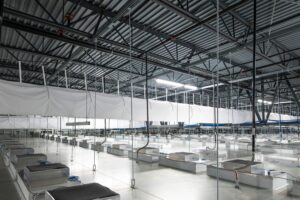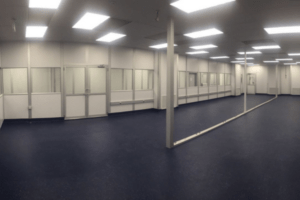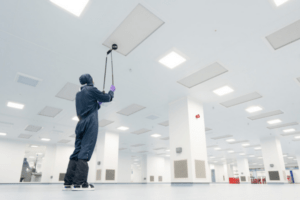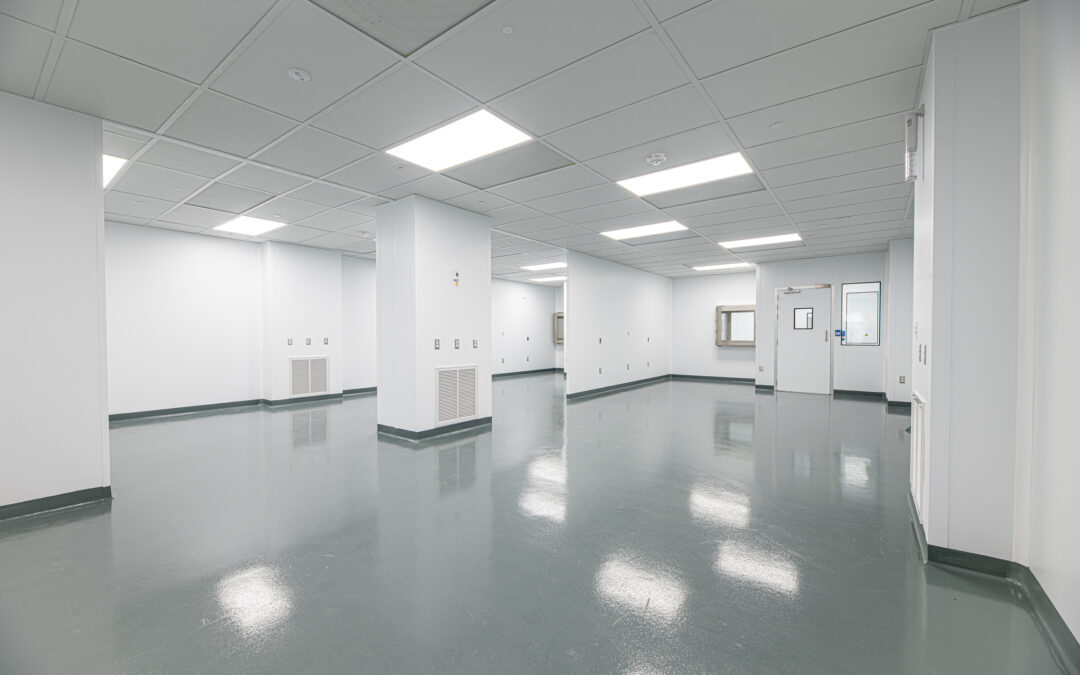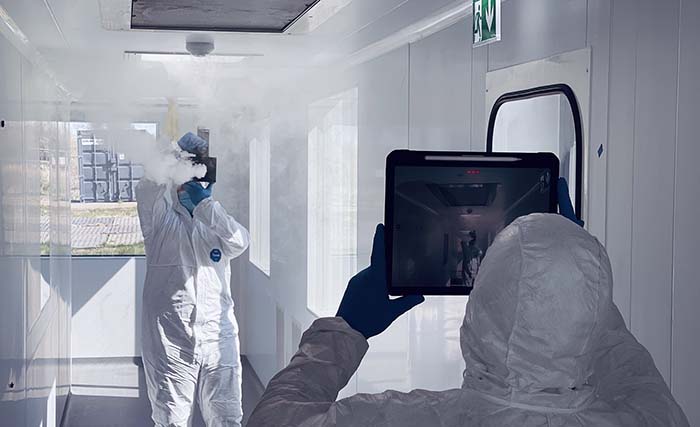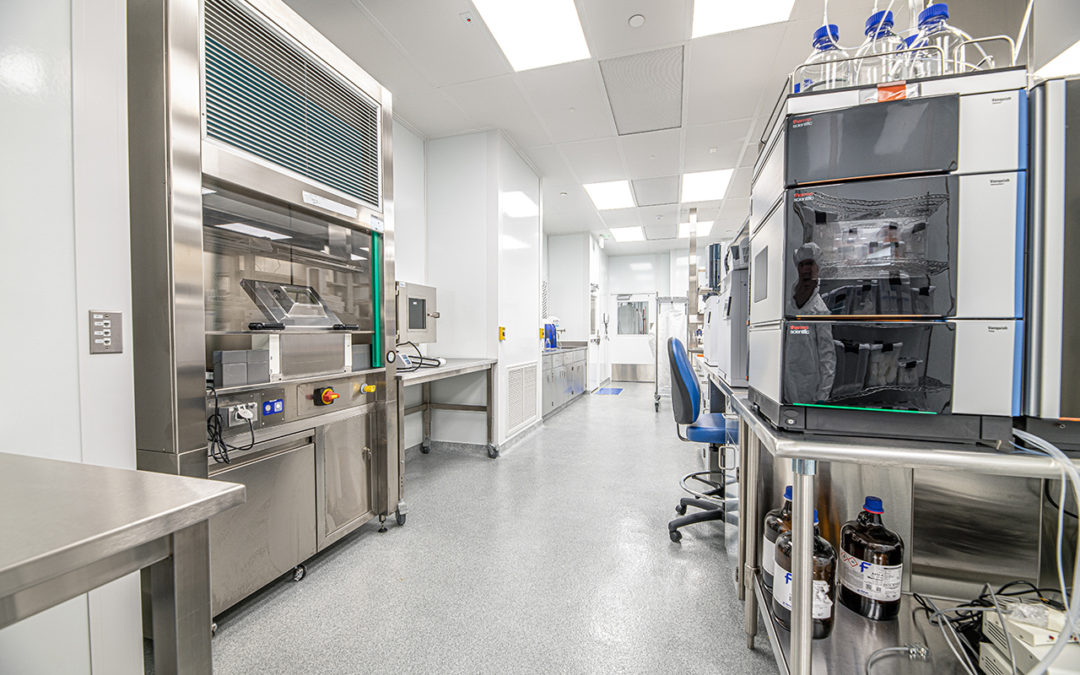
The Critical Role of Pharmaceutical Cleanrooms in Controlling Environmental Variables
Maintaining a controlled environment is paramount in the highly regulated and data-driven pharmaceutical industry. Pharmaceutical cleanrooms help ensure product safety, efficacy, and compliance and control environmental variables that could adversely affect manufacturing processes and the quality of the final product.
Keep reading to explore the importance of cleanrooms in the pharmaceutical sector and the key environmental variables they control to maintain optimal conditions for pharmaceutical manufacturing.
The Critical Role of Cleanrooms in Pharmaceutical Manufacturing
Cleanrooms establish controlled environments around critical processes where the concentration of airborne particles is specified and must be maintained at specific levels. These rooms are engineered to minimize ingress, product exposure, and operator exposure to aerosol contaminants.
Contamination control is critical in pharmaceutical manufacturing due to the potential impact on product efficacy and patient safety. Even minute levels of contamination can lead to significant consequences, including product recalls, regulatory penalties, and harm to patients.
Cleanrooms provide a controlled environment where factors such as air quality, temperature, and humidity are meticulously controlled to meet regulatory requirements and prevent contamination and cross-contamination between different stages of the manufacturing process.
5 Key Variables Controlled in Pharmaceutical Cleanrooms
By meticulously controlling environmental variables, cleanrooms ensure that pharmaceutical manufacturing processes are conducted under optimal conditions, minimizing the risk of contamination.
1. Temperature and Humidity Control
Variations in temperature and humidity can affect the stability of pharmaceutical products. Controlled temperature ensures that chemical reactions occur under optimal conditions, while proper humidity levels prevent moisture-sensitive materials from degrading or becoming contaminated.
2. HEPA Filtered Air Supply
High-Efficiency Particulate Air (HEPA) and Ultra-Low Penetration Air (ULPA) filters remove 99.97% to 99.999% of particles as small as 0.3 microns from the air. These filters ensure that the air within the cleanroom is free from dust, bacteria, and other contaminants, thereby protecting the integrity of pharmaceutical products.
3. Air Pressure Differentials
Air pressure is maintained between cleanrooms and adjacent areas to prevent the ingress of contaminants. Positive pressure is used in cleanrooms to keep out unfiltered air, while negative pressure is utilized in containment areas to ensure hazardous substances do not escape. This careful air pressure management helps control contamination pathways and maintain a sterile environment.
4. Microbial Contamination Control
Cleanrooms are equipped with microbial monitoring systems, and surfaces are regularly cleaned and disinfected. Personnel entering the cleanroom follow strict protocols, including wearing sterilized garments, to minimize the introduction of microorganisms.
5. Lighting and Noise Considerations
Proper lighting ensures personnel can perform tasks accurately and efficiently without causing eye strain or errors. Cleanrooms are designed with lighting systems that provide adequate illumination. Noise control is also important to maintain a comfortable working environment and to prevent distractions that could lead to mistakes in sensitive manufacturing processes.
The Impact of Environmental Variables on Pharmaceutical Processes
In pharmaceutical manufacturing, controlling environmental variables is crucial, as even minor deviations can lead to significant consequences.
Temperature and Humidity Affect Chemical Stability and Product Integrity
- Temperature and humidity are critical factors in maintaining the chemical stability and integrity of pharmaceutical products.
- Fluctuations in temperature can accelerate chemical reactions, degrading active ingredients and reducing the medication’s efficacy.
- High humidity levels can cause moisture-sensitive drugs to absorb water, resulting in changes to their physical state, such as dissolving, clumping, or becoming unstable.
- Low humidity can lead to desiccation and changes in drug potency.
Particle Control Prevents Contamination
- Airborne particles, including dust, fibers, and microorganisms, pose a significant contamination risk in pharmaceutical manufacturing. These particles can originate from various sources, such as personnel, equipment, and the external environment.
- HEPA and ULPA filters in cleanrooms remove particles from the air, ensuring a contaminant-free environment.
Microbial Control Ensures Product Safety and Efficacy
- Microbial contamination is a critical concern in pharmaceutical manufacturing, as the presence of bacteria, fungi, or viruses can adulterate products making them unsafe for use.
- Sterile materials and equipment adhere to rigorous cleaning and disinfection protocols and enforce strict hygiene practices for personnel.
Discover Angstrom’s Turnkey Cleanroom Solutions
Angstrom offers comprehensive turnkey cleanroom solutions tailored to the pharmaceutical industry’s unique needs. Our services encompass every aspect of cleanroom development, from facility programming and design to procurement, installation, validation, and ongoing maintenance.
We understand that each pharmaceutical manufacturing operation has distinct requirements. Our experienced consultants, engineers, and designers will work closely with you to develop tailored cleanroom solutions, whether accommodating unique workflows, integrating specialized equipment, or ensuring compatibility with existing facilities.
At Angstrom, our turnkey solutions offer a seamless, end-to-end approach to cleanroom development:
- Design: Detailed planning and conceptualization to create a cleanroom that meets all technical and regulatory specifications.
- Installation: Expert construction services that adhere to the highest standards of quality and precision.
- Validation: Rigorous testing and validation procedures to ensure the cleanroom performs as expected and complies with industry standards.
- Maintenance: Ongoing maintenance and support services to keep the cleanroom operating at peak efficiency and compliance.
Partner with Angstrom for Expert Pharmaceutical Cleanroom Solutions
Contact Angstrom today for expert cleanroom solutions that enhance your pharmaceutical processes. Our team is dedicated to delivering custom-designed cleanrooms that meet the highest standards of quality and performance. Let us help you create the perfect cleanroom environment for your pharmaceutical operations.


